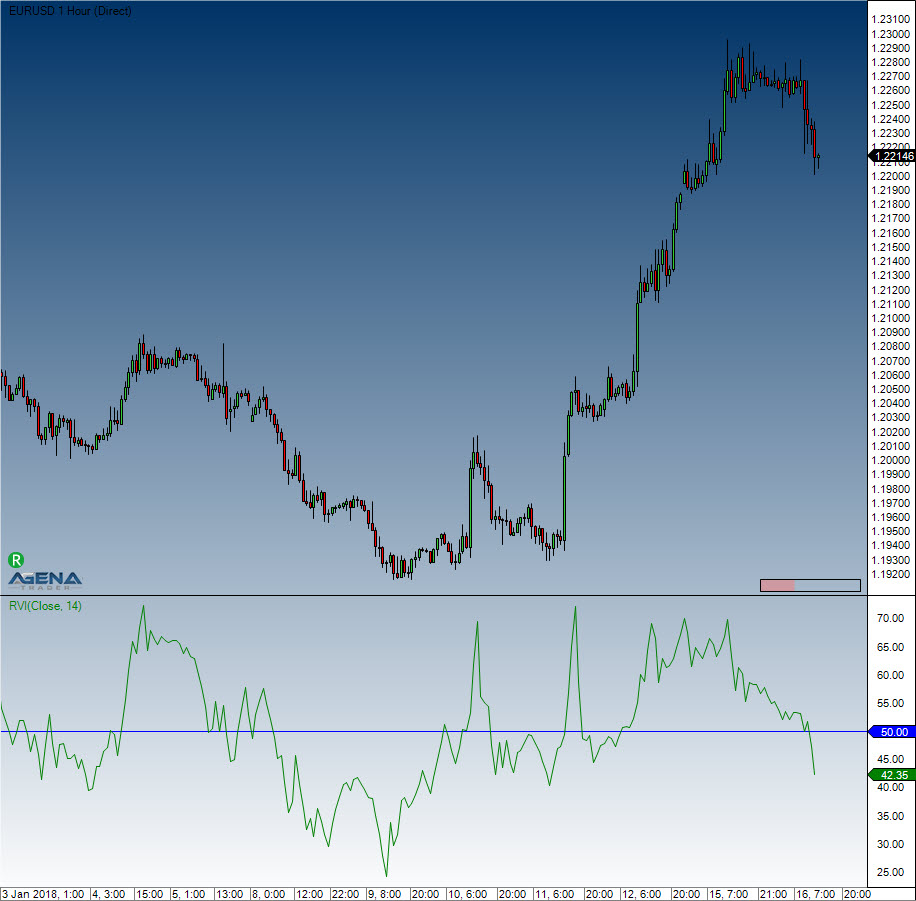Relative Volatility Index (RVI)
Description
The Relative Volatility Index (RVI) has many similarities to the RSI indicator. Donald Dorsey developed the RVI, which uses the standard deviation instead of the daily price span. To determine the underlying volatility of the instrument, the RVI uses the standard deviation over a period of 10. The RSI indicator is then used on the results, which normalizes them. What comes from this is displayed on a scale of 1 to 100.
Interpretation
Values above 50 assume an increase in volatility. Values below 50 imply a drop in volatility. Dorsey recommends using the indicator as a filter for other indicators.
Further information
http://vtadwiki.vtad.de/index.php/Relative_Volatility_Index_%28RVI%29
Usage
RVI(int period)
RVI(IDataSeries inSeries, int period)
RVI(int period)[int barsAgo]
RVI(IDataSeries inSeries, int period)[int barsAgo]Return value
double
When using this method with an index (e.g. RVI(14)[int barsAgo] ), the value of the indicator will be issued for the referenced bar.
Parameters
inSeries Input data series for the indicator
period Number of bars included in the calculations
Visualization

Example
Last updated